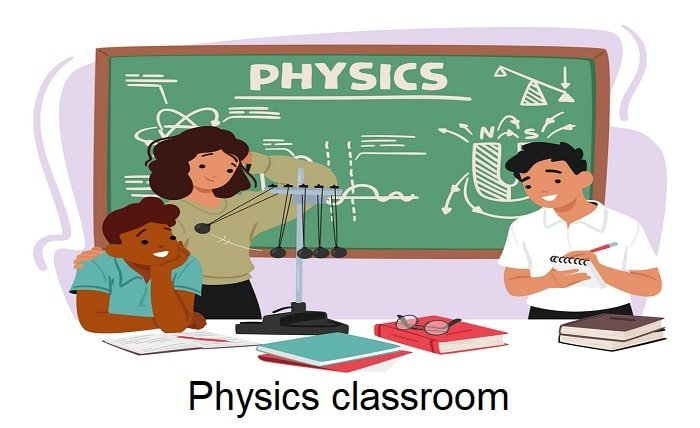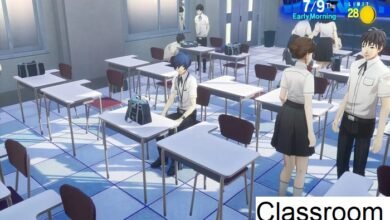Physics Classroom: Exploring the Wonders of Science

The physics classroom is where students explore the fundamental principles governing the universe. From Newton’s laws to quantum mechanics, the physics classroom serves as a gateway to understanding forces, motion, and energy. Learning in the physics classroom involves theoretical knowledge, practical experiments, and problem-solving skills that enhance scientific thinking.
Importance of a Physics Classroom
A physics classroom plays a crucial role in educating students about the natural world. In a physics classroom, students gain insights into physical laws, scientific methods, and technological advancements. The physics classroom encourages critical thinking and analytical skills, which are essential for careers in engineering, research, and innovation.
Additionally, the physics classroom provides hands-on experience through lab experiments. These activities help students apply theoretical knowledge in practical scenarios. Without a well-equipped physics classroom, understanding scientific concepts would be challenging.
Teaching Methods in a Physics Classroom
Different teaching methodologies are used in a physics classroom to enhance learning. A physics classroom often incorporates visual aids, such as diagrams, videos, and simulations, to make complex theories more accessible. Traditional lecture-based teaching remains a core aspect of the physics classroom, ensuring students grasp fundamental concepts.
Moreover, interactive teaching methods like flipped classrooms, group discussions, and peer learning make the physics classroom engaging. With the integration of technology, modern physics classrooms use digital resources to supplement traditional teaching techniques.
Experiments and Practical Learning in a Physics Classroom
Hands-on learning is essential in a physics classroom. The physics classroom provides students with opportunities to conduct experiments, analyze results, and verify scientific principles. From measuring acceleration using inclined planes to studying electric circuits, the physics classroom fosters curiosity and innovation.
The physics classroom also emphasizes safety protocols while conducting experiments. Proper guidelines ensure that students handle laboratory equipment safely and effectively. Without experimentation, a physics classroom would lack the practical application needed to reinforce theoretical learning.
Role of Technology in a Physics Classroom
Technology has revolutionized the physics classroom, making learning more interactive and accessible. In a modern physics classroom, digital simulations allow students to visualize complex phenomena like wave-particle duality or black hole dynamics. Interactive whiteboards and online resources enhance the physics classroom experience by providing real-time demonstrations.
Additionally, the physics classroom benefits from virtual labs, where students can perform experiments online. These advancements make the physics classroom more flexible, catering to diverse learning styles and improving scientific comprehension.
Challenges Faced in a Physics Classroom
Despite its importance, a physics classroom faces several challenges. Many physics classrooms struggle with limited resources, outdated equipment, or lack of qualified teachers. These obstacles hinder the quality of education in the physics classroom and affect students’ learning experiences.
Moreover, some students find concepts in the physics classroom difficult to grasp, leading to a lack of interest. Teachers in the physics classroom must adopt innovative teaching methods to keep students engaged and motivated. Addressing these challenges is essential for improving the physics classroom experience.
Future of Physics Classroom Education
The future of the physics classroom looks promising with advancements in artificial intelligence and virtual reality. In the coming years, a physics classroom will incorporate immersive learning experiences, allowing students to explore space, atomic structures, and electromagnetic fields through VR simulations. These enhancements will transform the physics classroom into a dynamic learning environment.
Additionally, personalized learning will be a key aspect of future physics classrooms. AI-powered tutors and adaptive learning platforms will tailor lessons to individual student needs, making the physics classroom more effective and inclusive.
Conclusion
The physics classroom is more than just a place of learning; it is a hub for scientific discovery and innovation. By incorporating advanced teaching methods, hands-on experiments, and technological tools, the physics classroom continues to evolve. Overcoming challenges and embracing new technologies will ensure that the physics classroom remains a foundation for future scientists, engineers, and researchers.
FAQs
1. Why is a physics classroom important?
A physics classroom is crucial for understanding the fundamental laws of nature, fostering scientific thinking, and developing problem-solving skills.
2. What are some essential experiments in a physics classroom?
Common experiments in a physics classroom include studying Newton’s laws, measuring acceleration, working with circuits, and exploring optics.
3. How does technology enhance a physics classroom?
Technology in a physics classroom includes simulations, virtual labs, and interactive resources that make learning more engaging and accessible.
4. What are the challenges in a physics classroom?
Challenges in a physics classroom include limited resources, lack of updated equipment, and difficulty in grasping complex scientific concepts.
5. What is the future of physics classrooms?
The future of physics classrooms involves AI-powered learning, VR-based simulations, and personalized education to enhance student understanding and engagement.





